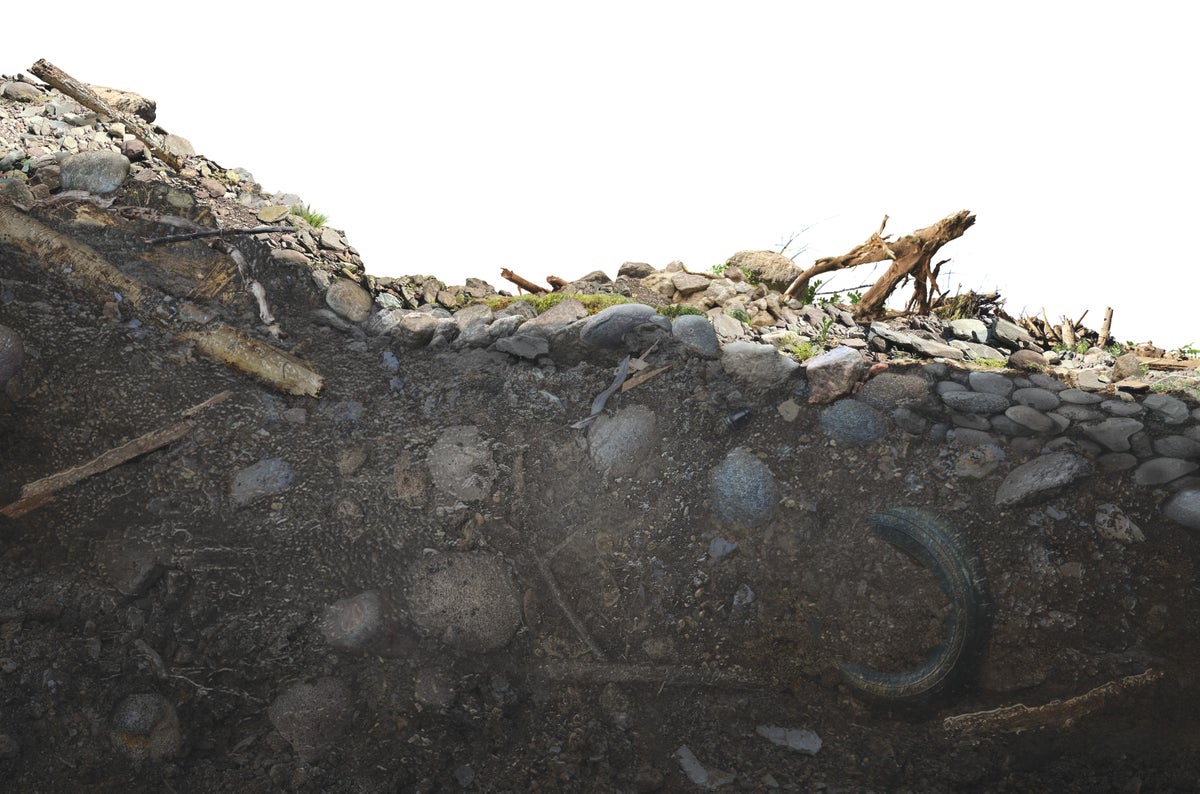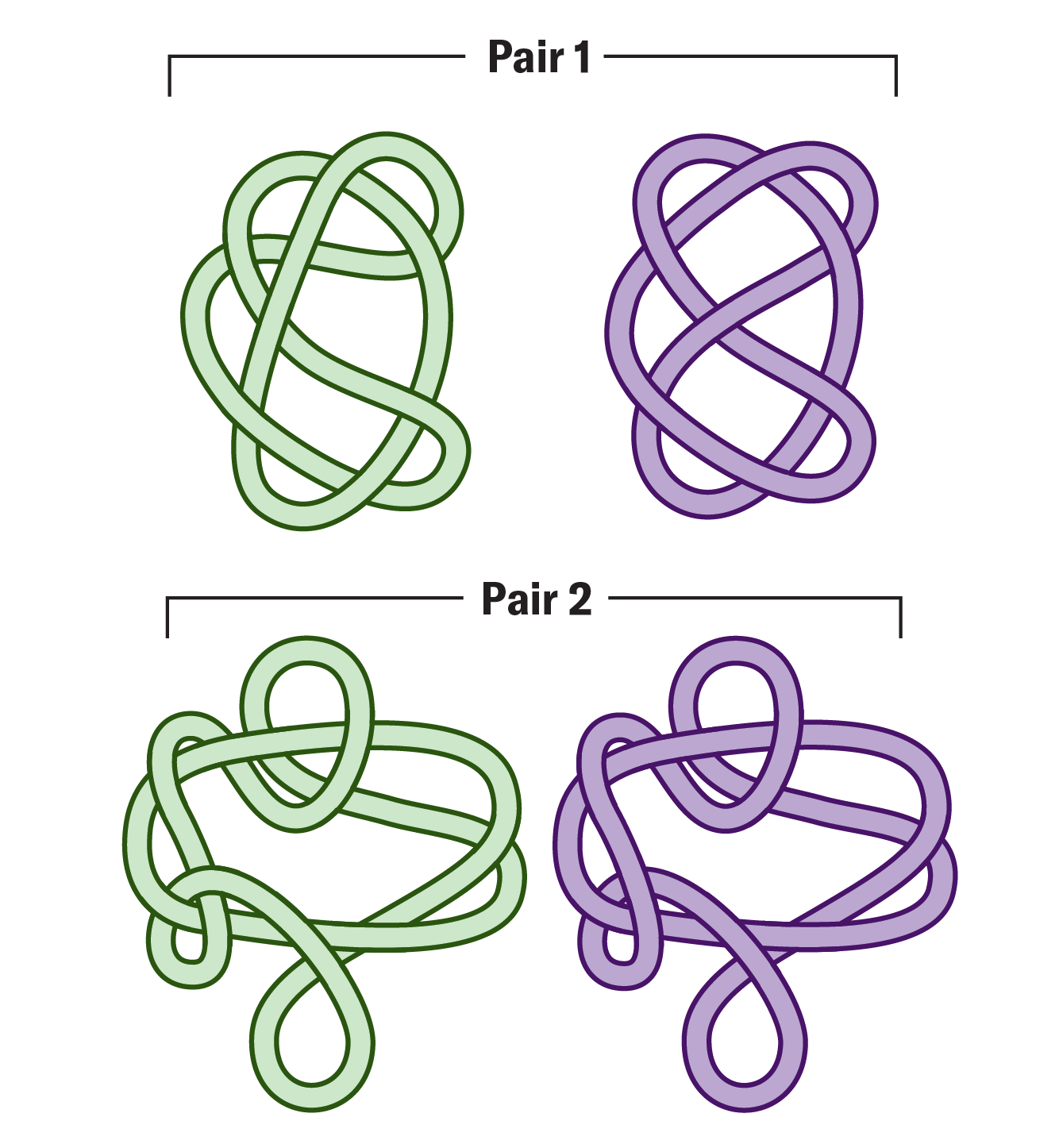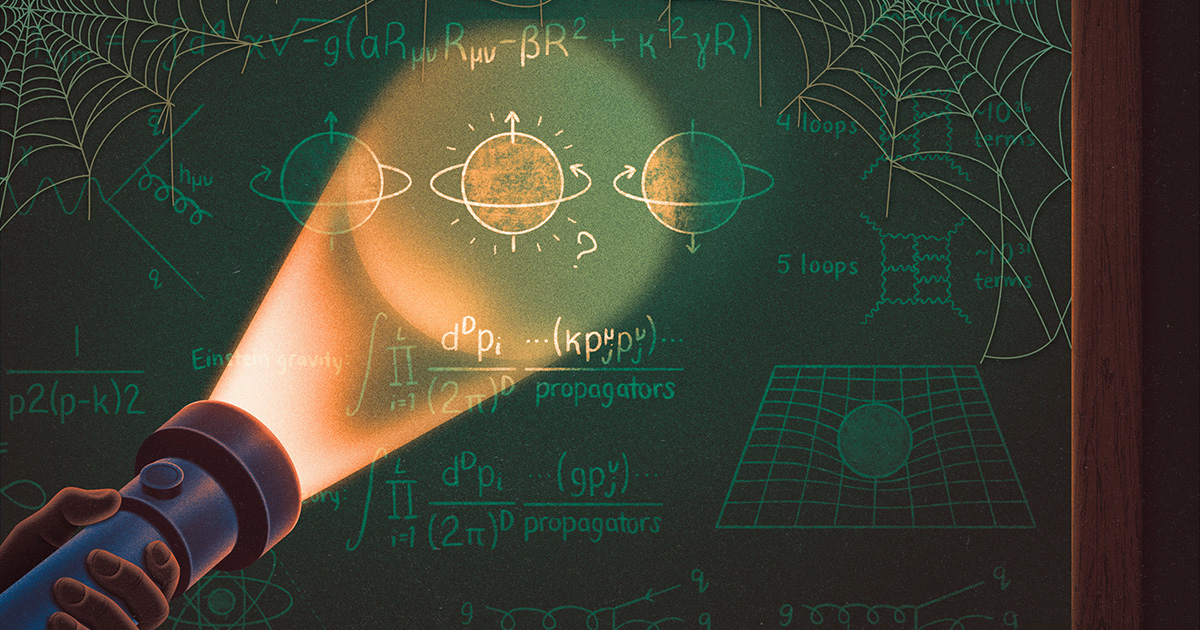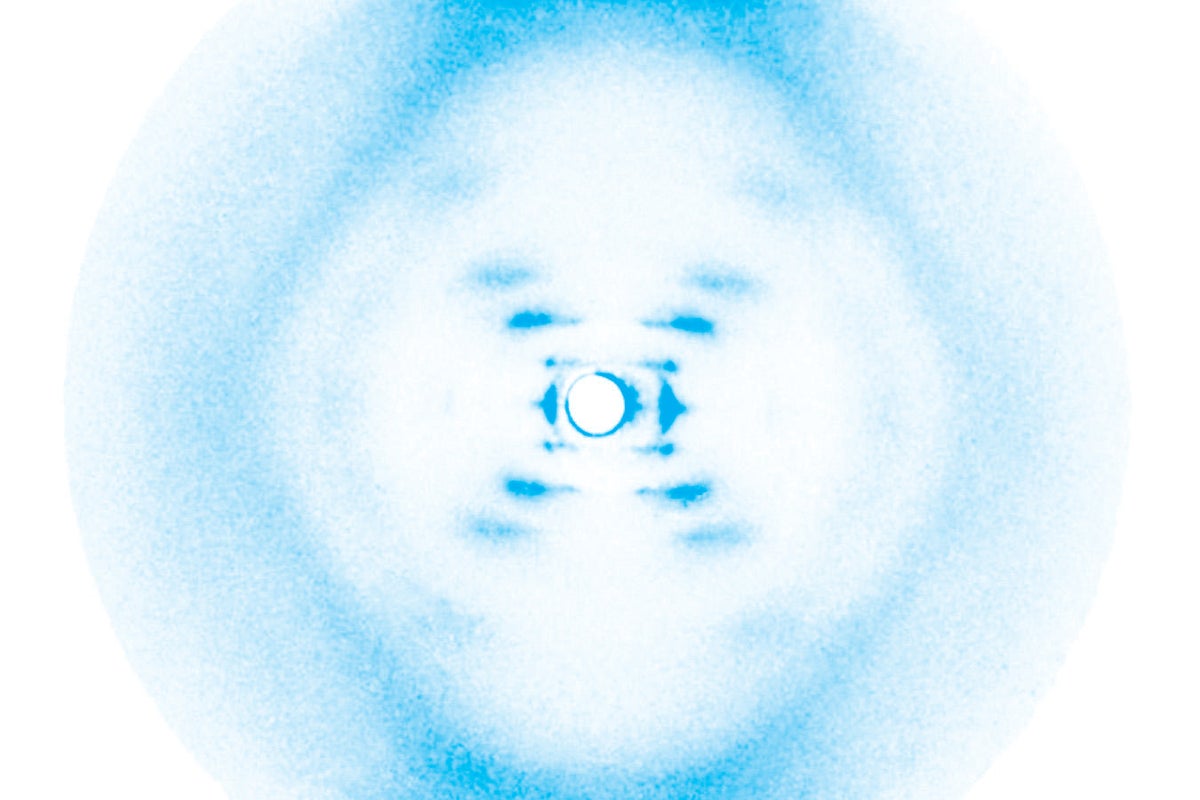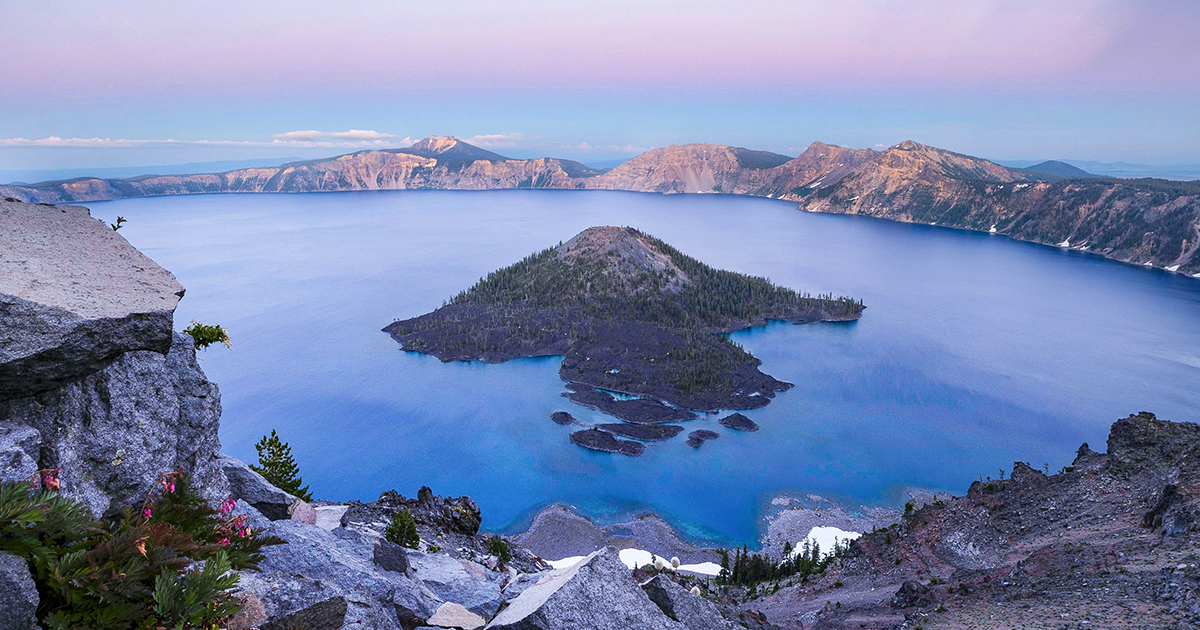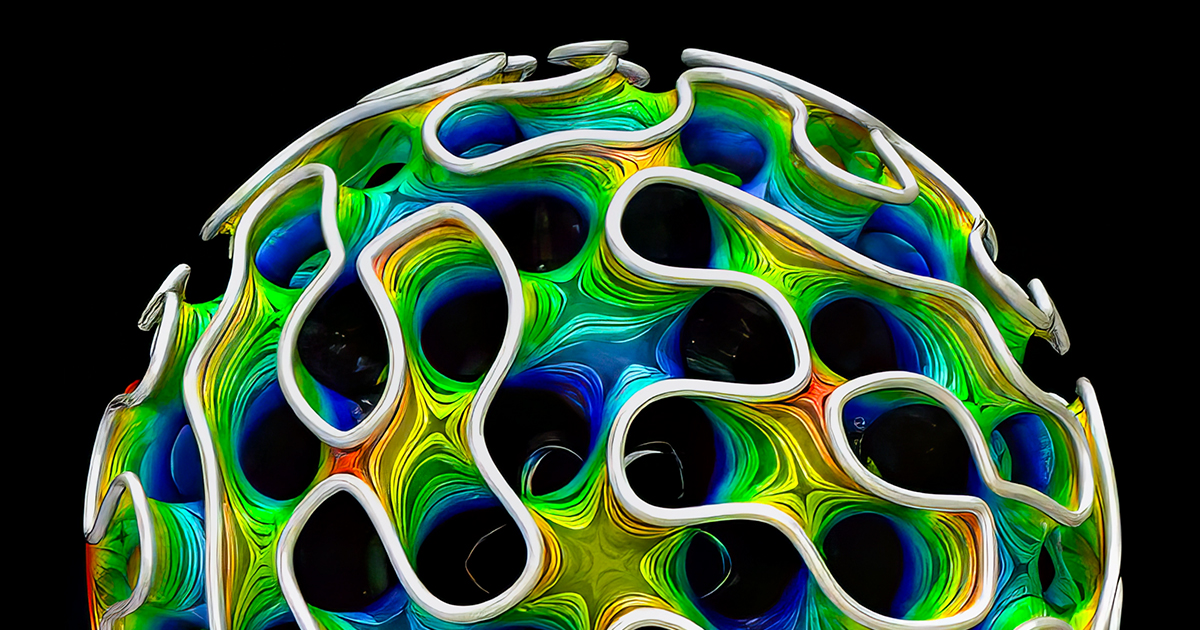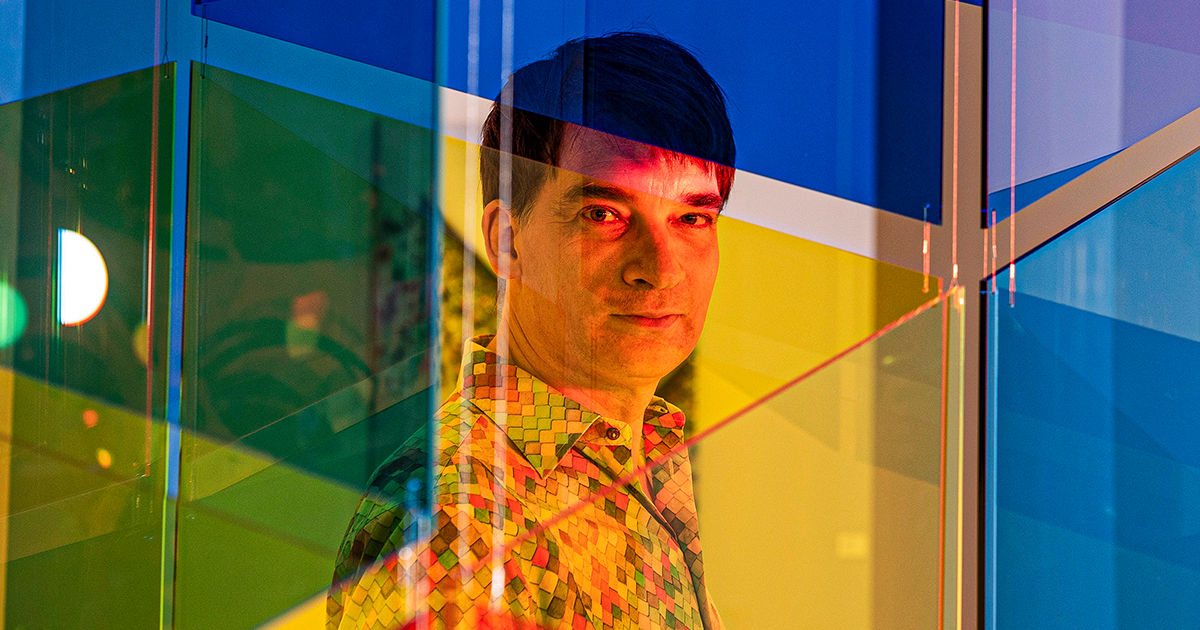The landslide behind my neighbor’s backyard doesn’t exist—not according to the New York State landslide map or Greene County’s hazard-mitigation plan or the federal inventory managed by the U.S. Geological Survey. But when you’re standing in the middle of the debris field, the violence of the event is still evident 14 years after it occurred.… Continue reading Global Landslide Risk Rises as the Planet Warms
Category: Quantum Stuff
Math Puzzle: Find the Unknot
One string in each of the following pairs can be unraveled into a circle—the so-called unknot. Which one is it? Show puzzle solution The knots at the top left and the bottom right can be unraveled into circles: Challenge problem: The other two knots, which can’t be completely unraveled, can each be made to look… Continue reading Math Puzzle: Find the Unknot
Old ‘Ghost’ Theory of Quantum Gravity Makes a Comeback
The force we experience most intimately remains the most mysterious. Physicists understand how vast migrations of particles called photons light up our homes, and how swarms of “gluon” particles hold together the cores of our atoms. But they can’t say what gravity particles, if any, delight us as babies by enabling our spoons to plummet… Continue reading Old ‘Ghost’ Theory of Quantum Gravity Makes a Comeback
Poem: ‘Love Letter from Photograph 51’
September 16, 2025 1 min read Poem: ‘Love Letter from Photograph 51’ Science in meter and verse By Faith Paulsen edited by Dava Sobel & Clara Moskowitz Science History Images/Alamy Stock Photo “[c]learly Rosy had to go or be put in her place…. The thought could not be avoided that the best home for a… Continue reading Poem: ‘Love Letter from Photograph 51’
Contributors to Scientific American’s October 2025 Issue
September 16, 2025 4 min read Contributors to Scientific American’s October 2025 Issue Writers, artists, photographers and researchers share the stories behind the stories By Jen Schwartz Chris GunnThe Lives of Dead Trees For almost 25 years Chris Gunn (above) worked as a contract photographer for NASA, where he shot precious objects such as moon… Continue reading Contributors to Scientific American’s October 2025 Issue
Mixing Is the Heartbeat of Deep Lakes. At Crater Lake, It’s Slowing Down.
In the past, when summer nights grew cold, the lake released the day’s accumulated heat, causing surface water to become denser and sink. This phenomenon drives the shallow mixing that occurs in summer. As nights have warmed, however, this process has weakened, and mixing has slowed. Counterintuitively, as the layer of surface water has become… Continue reading Mixing Is the Heartbeat of Deep Lakes. At Crater Lake, It’s Slowing Down.
New Proofs Probe Soap-Film Singularities
They started by re-proving Hardt and Simon’s decades-old result in eight dimensions, this time using a different method they hoped to test out. First, they assumed the opposite of what they wanted to show: that when you slightly perturb the wire frame that defines your surface, a singularity (a single point) always persists. Each time… Continue reading New Proofs Probe Soap-Film Singularities
Can Fighting Racism Help Prevent Alzheimer’s? Scientists Think So
This article is part of “Innovations In: Alzheimer’s Disease” an editorially independent special report that was produced with financial support from Eisai. About four years ago Clifford Harper, then 85, announced to his wife that he was quitting alcohol. Harper wasn’t a heavy drinker but enjoyed a good Japanese whiskey. It was the first of… Continue reading Can Fighting Racism Help Prevent Alzheimer’s? Scientists Think So
To Have Machines Make Math Proofs, Turn Them Into a Puzzle
First things first: What is SAT? It uses something called a propositional formula, which you can imagine as a very big sudoku board. In every cell, you only have two options: only one or zero, standing for true or false. You also have the rules, or constraints, about how many zeros or ones can be… Continue reading To Have Machines Make Math Proofs, Turn Them Into a Puzzle
Fast Fashion Must Go Out of Style
People in the U.S. throw away at least 17 million tons of textiles every year—about 100 pounds of clothing per person. At the same time, unsold blouses, jackets, and other fashion-industry leftovers end up in dumps such as the one in Chile’s Atacama Desert, so vast as to be visible from space. Many of these… Continue reading Fast Fashion Must Go Out of Style
